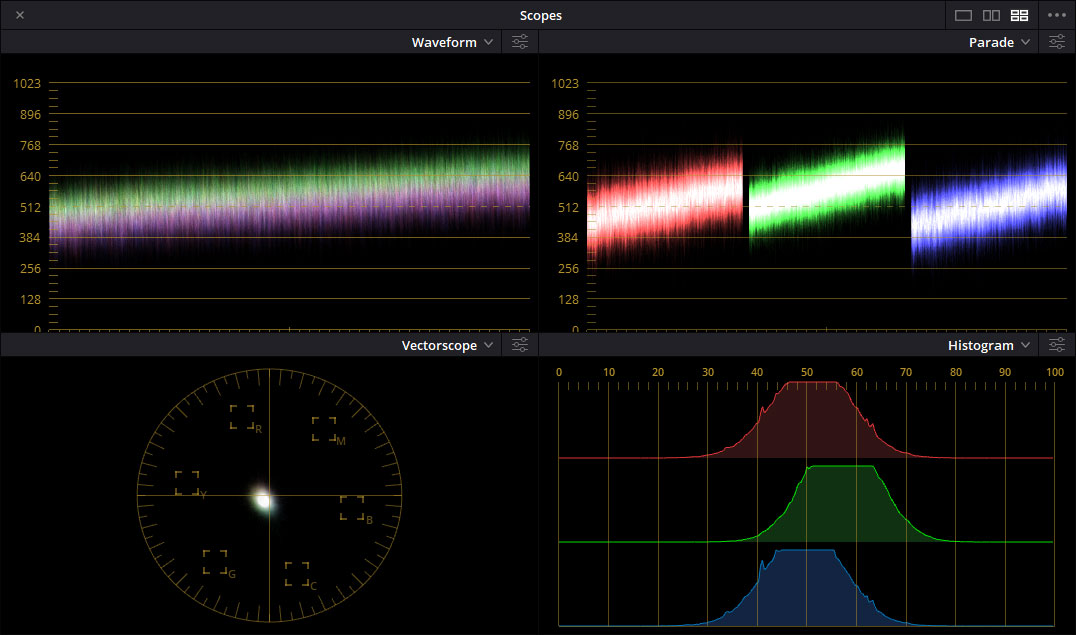Newsmeldung von slashCAM:
Nicht jeder will sich mit Grading auseinandersetzen, doch auch für kleine Farbkorrekturen sollte das Farbmanagement im System richtig eingestellt sein. Viele potentielle Fehler lassen dabei mit einem schnellen Trick aufdecken...
Hier geht es zum slashCAM Artikel:
Tips: Farbmanagement korrekt? Der slashCAM Color Workflow Schnellcheck!
Antwort von dienstag_01:
Was ihr beschreibt, ist, wenn überhaupt, ein minimaler Teilaspekt des Farbmanagements. Die Ausgabe würde ja auf jeden Fall dazugehören.
Sobald man zwei verschiedene Materialien in der Timeline hat, ist das auch nur noch graue Theorie.
Zweifel sind aber auch grundsätzlich berechtigt, da Gammakurven ja nicht linear sind. Und der hier gern benutzte Begriff Color Science beinhaltet ja eigentlich nichts anderes, als eine unterschiedliche Gewichtung der Farbwerte. Zuerst natürlich zwischen den verschiedenen Herstellern. Aber nicht zuletzt auch zwischen verschiedenen Luma-Werten.
Vielleicht wäre es gut, ihr würdet Material zum Download bereitstellen.
Antwort von -paleface-:
Und doof gefragt. Kann man sich nicht einfach in Photoshop 2 Graue Bilder zaubern?
Muss man das filmen?
Antwort von Frank Glencairn:
Ja, muß man, die Photoshop Dateien haben ja nix mit dem Farbraum, LOG Profil und der Colorscience deiner Kamera zu tun.
Antwort von Frank Glencairn:
Und weil wir gerade dabei sind:
Asus arbeitet jetzt mit LightIllusion CMS zusammen
ASUS today announced a new partnership with Light Illusion, who
specializes in critical color management for the film, post-production and broadcast industries. Through
the partnership, ASUS ProArt displays now feature integration with ColourSpace CMS, a software
calibration system that connects to a wide variety of display calibration probes to correctly assess display
color rendition, providing advanced and precise SDR and HDR calibration for ultimate color accuracy.
The latest ASUS ProArt PA32UCX, PA32UCX-P and PA27UCX displays are the first to support Light
Illusion ColourSpace CMS for SDR and HDR calibration, offering support for the Rec. 709, DCI-P3, DCI
P3 D65 and Rec. 2020 color spaces, as well as ST2084 and HLG multiple-HDR-format for HDR hardware
calibration. ColourSpace CMS is used in display calibration and color management in the professional
media industry and is compatible with most major calibrators, including those from Colorimetry Research,
X-Rite, Datacolor and Klein.
ProArt displays are targeted at content creators, who depend on exceptional color performance. General
SDR calibration is required for photo editing, graphic design and SDR video editing. For video
professionals working in post-production, advanced HDR calibration is paramount to ensuring exceptional
color accuracy and brightness.
https://www.lightillusion.com/zippdf/asus.pdf
Antwort von Frank Glencairn:
Und das hier ist vielleicht auch ganz interessant, falls jemand tiefer einsteigen will:
https://jonnyelwyn.co.uk/film-and-video ... o-editors/
Antwort von dienstag_01:
"Frank Glencairn" hat geschrieben:
Und das hier ist vielleicht auch ganz interessant, falls jemand tiefer einsteigen will:
https://jonnyelwyn.co.uk/film-and-video ... o-editors/
Der Artikel von 2018 bringt 2019 ein Update zu einem Inhalt, der wahrscheinlich schon seit 2010 bekannt ist, nämlich in welcher Bittiefe Premiere rechnet, Gamma ist auch erklärungsbedürftig - schnell vergessen.
